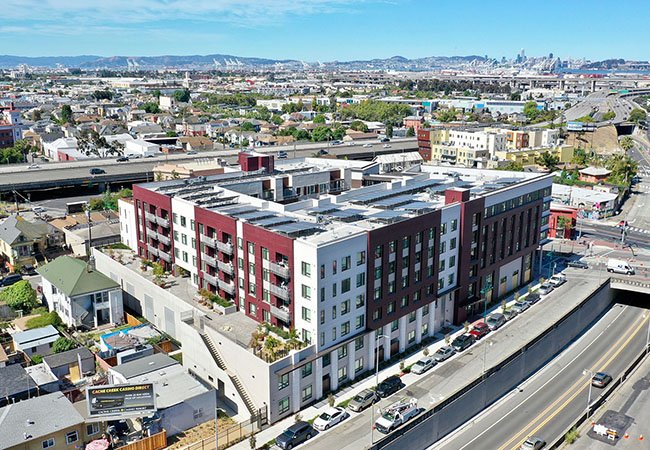Ukiah’s bold housing policy is creating big results
Many cities in California are punching well above their weight to solve the housing affordability crisis. Ukiah (pop. 16,607) recently became one of the first rural cities to receive the state’s “prohousing” designation earlier this month. It is a remarkable accomplishment for a community that was once perceived as resistant to development. As recently as the early 2000s, developers complained about the “arduous” process…
Park Social keeps San Diego artists afloat, reconnects residents with parks and each other
When COVID-19 shut down San Diego, it felt like the end of the city’s vibrant arts sector. Venues closed their doors, gigs dried up, wallets tightened, and an existential malaise swept through a community that lived paycheck to paycheck. “Our social, intellectual, and professional lives can be pretty embedded in the rhythm of art exhibitions' openings,” said Allison Wiese.
Emeryville’s Development Bonuses code lays the foundation for increased housing
Like many cities, Emeryville’s housing market is out of balance. The supply does not come close to the demand. Emeryville has roughly 30,000 jobs, but only 12,905 residents. Both are expected to increase in the coming years, especially if the city’s burgeoning research sector continues to grow. Rebalancing that ratio is tricky and will take years to fully realize.
Oakland is closing the digital divide through Oak WiFi and education
In Oakland, as is the case for many cities, there is a strong correlation between neighborhoods with poor internet service and those that were “redlined” beginning in the 1930s. The official practice of redlining has been illegal for decades, but the negative effects still remain. For those living in formerly redlined neighborhoods, the digital divide is well documented…
Fresno gets the spotlight in a national infrastructure event
After years of stalled negotiations, a historic, bipartisan infrastructure agreement advanced out of the U.S. Senate. Last Thursday, five government leaders from across the country joined President Joe Biden for a conversation about the potential impact of the $1.2 trillion Infrastructure Investment…
New building. New logo. New possibilities.
It’s been 44 years since the Museum opened. In those four decades, it’s expanded from a small, brick building to the largest cultural institution within a 150-mile radius. Its collection has grown from 1,000 items — mostly from the Americas — to over 30,000 objects from six different continents. However, the Museum isn’t just a passive, cultural repository. On average, 3,000 people connect with the Museum through its programs each year…





